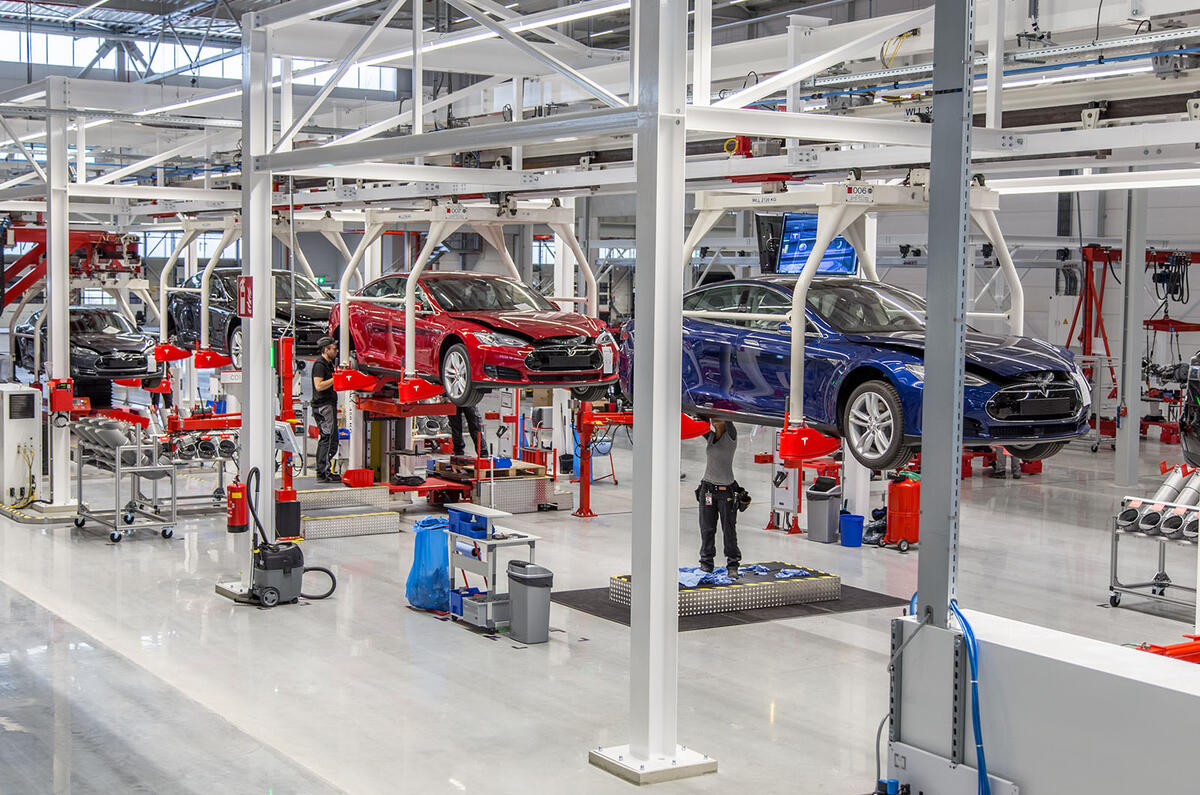Last week Tesla dominated motor industry headlines with the launch of its 200-mile-range Model 3 saloon.
Within days, 276,000 refundable deposits had been put down, a level of interest on a different scale even to the Volkswagen Beetle relaunch in 1997, a previous standard-setter in pre-launch mania.
But now the hard work begins. The Model 3 - which costs $35,000 in the US, equivalent to £25,000 here but the UK price has yet to be determined - is the cornerstone of Tesla founder Elon Musk’s plan to ramp up production the Tesla Factory in Fremont, San Francisco, to an ambitious 500,000 cars a year by 2020, with the bulk of them (400,000) being the Model 3.
Given that the Model 3 is not in series production until late 2017, getting near this volume in just 24 months will be a sensation, if only because Tesla has never made more than 50,000 cars per year, a rate that would take six years to clear the Model 3 order backlog. And it's already fallen short of its production targets for first quarter of 2016, delivering 14,820 vehicles; 1180 less than it predicted.
At least there is a minor precedent for this high level of output. Fremont peaked at 500,000 units in a previous life when it housed a joint venture between GM and Toyota called NUMMI (New United Motor Manufacturing Inc), once home of the Geo Prizm, Pontiac Vibe and Toyota Tacoma pick-up.
The Tesla factory retains the same sprawling 300-acre footprint with 5m sq ft of buildings, but ramping back up to 500,000 units of production in just 36 months will set new automotive manufacturing records.
Nissan’s Sunderland factory, for example, is the biggest in the UK and one of the largest in Europe, and it started production in 1984. Yet it took 28 years to reach 500,000 units of output, boosted by the Nissan Qashqai in 2012.
Tesla hasn’t yet revealed how it will go from 80,000 units this year to 500,000 in 2020, and whether its two paint shops can once again cope with such high volume.
Taking robotic assembly to a new level?
Engineers have talked about a high level of robotic assembly, but that would be an industry first, too.
It may be standard practice to delegate body assembly to robotic handling equipment and welding guns - Nissan, for example, deploys 828 robots to weld the Qashqai’s body together - but final assembly remains a manual job that requires skill and experience to execute successfully. In the next 18 months, Tesla will have to find and train a large, new workforce to assemble the Model 3. Some think Tesla will need outside help to make it happen.





Join the debate
Add your comment
Chargers everywhere
Reason
Tesla 3
Tesla 3